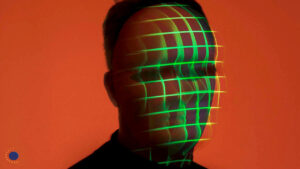
Few biometric technologies have received as many reactions – positive or negative – as facial recognition. When combined with artificial intelligence, face recognition is highly accurate but can be considered invasive. Today, we’ll take a look at the second part of this article, i.e., how AI is incorporated in facial recognition technology and what its implications are.
HOW ARTIFICIAL INTELLIGENCE IS TRAINED FOR FACIAL RECOGNITION
As mentioned earlier in the article, AI face recognition needs to practice on manually selected photosets. Some companies make this easier for AI developers by providing training data for facial recognition systems. Let’s look at Lionbridge AI, for instance. According to them, facial recognition models see many calculations instead of a human face.

For security and surveillance purposes, a model can compare those calculations to other face calculations located within a database. But, regardless of the use case, every single AI facial recognition system needs to train with lots of face image data. AI models must be trained with facial images that vary in ethnicity, age, angles, lighting, and other factors.
Sometimes, to build their training datasets, facial recognition companies scrape the open web to gather photos of people without consent. This is highly controversial, and the ethicality of it is brought into question.
FUTURE OF ARTIFICIAL INTELLIGENCE FOR FACIAL RECOGNITION
The more complex and intelligent that facial recognition becomes, the harder it is to understand how it actually works. A neural network’s reasoning is integrated into the behavior of thousands of “neurons,” which are combined into hundreds of interconnected layers.
In the coming years, the US will need to make difficult choices about AI: individuals such as Stephen Hawking and Elon Musk have voiced their hesitancy on using AI, suggesting that it could end up destroying humanity.
Yet, some countries are barging ahead in the AI facial recognition realm; currently, China is leading the industry. China’s goal is to establish industrial standards now, so that they can have a hand in shaping the development and implementation of worldwide standards. As the technological battleground between the US and China intensifies, we are sure to see more and more AI solutions and standards developed at a rapid rate.
SUMMARY
AI facial recognition is powerful, but it comes with a large set of ethical implications. What do you think? Is it possible to regulate the way that facial data for AI systems is harvested? And, if it’s possible, does that mean that it’s necessary. These are tricky questions, but we will keep you updated as more legal precedents are set, and as the facial recognition industry continues to evolve.
FACE RECOGNITION AI FAQ

WHAT IS AI FACIAL RECOGNITION?
Intelligent, AI-based facial recognition technology is software that can instantaneously search databases of faces and compare them to one or multiple faces that are detected in a scene.
HOW DOES AI FACIAL RECOGNITION WORK?
Each person’s face is broken up into numerous datapoints; these can be the distance between the eyes, the height of the cheekbones, the distance between the eyes and the mouth, and so on. AI facial recognition searches on those datapoints and tries to account for variations.
DOES FACIAL RECOGNITION USE AI?
Yes, the majority of modern facial recognition algorithms have some semblance of integrated deep learning and neural network.
HOW CAN AI BENEFIT BIOMETRICS?
AI biometrics can reduce costs of identity authentication and verification, flexibly respond to fraud threat, and deliver enhanced accuracy, speed, and scalability.
Source: RECFACES



































































